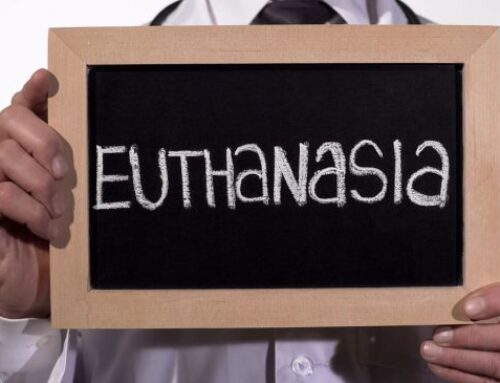 A study published in the Oct. 5 British Medical Journal found that nearly half of all euthanasia deaths in the Flanders region of Belgium were not reported. This study combined with the recent study that was published in the CMAJ in May 2010 that indicated that 32 per cent of all euthanasia deaths in the Flanders region of Belgium were without request or consent suggests that the Belgium euthanasia model is out-of-control.
A study published in the Oct. 5 British Medical Journal found that nearly half of all euthanasia deaths in the Flanders region of Belgium were not reported. This study combined with the recent study that was published in the CMAJ in May 2010 that indicated that 32 per cent of all euthanasia deaths in the Flanders region of Belgium were without request or consent suggests that the Belgium euthanasia model is out-of-control.
Recently retired Belgium professor and pro-euthanasia activist Jan Bernheim toured Quebec, telling audiences that the Belgium euthanasia law is operating without any problems or abuses. When I was doing my speaking tour of Australia, Bernheim had also just completed a similar speaking tour. I responded to Bernheim’s comments by stating that he is intentionally misleading the public.
The authors of the BMJ study analysed the death certificates in the Flanders Region of Belgium. After determining that the death was related to euthanasia, the authors of the study sent a five page questionnaire to the treating physician. The physicians were guaranteed total anonymity and asked to respond to the questionnaire.
The study determined that euthanasia deaths were reported 52.8 per cent of the time, even though reporting is a requirement of the law. The most recent study in the Netherlands from that country’s Ministry of Health, Welfare and Sport indicated that the euthanasia deaths were reported 80.2 per cent of the time.
The BMJ study indicates the euthanasia death was not reported because the physician did not perceive their act as euthanasia (76.7 per cent of the time), reporting was considered an administrative burden (17.9 per cent), the legal, due care requirements, had possibly not all been met (11.9 per cent), euthanasia is a private matter between the physician and patient (8.7 per cent), and due to possible legal consequences (2.3 per cent).
It is interesting that 97.7 per cent of the reported cases were done by the physician, whereas 41.3 per cent of the unreported cases were done by a nurse alone. This confirms the result of another recent study (published in a May issue of the CMAJ) that found 45 per cent of euthanasia deaths in Belgium were done by nurses without request or consent.
This study strongly challenges the Belgium government official reports. According to these official reports, physicians who reported cases practised euthanasia carefully and in compliance with the law, and no cases of abuse were found. But if only 52.8 per cent of all euthanasia deaths are reported and the physicians admitted that in at least 2.3 per cent of the time the euthanasia death was not reported due to possible legal consequences and 11.9 per cent of the cases were not reported because the legal requirements were not met, it is clear that physicians are only choosing to report the cases that are within the parameters of the law.
This study creates significant suspicion concerning the administration of the assisted suicide laws in Oregon and Washington states.
In Washington this type of a study could not even be done because the law requires the physician to lie on the death certificate. The death, is required by law, to be listed as related to the illness the person had (for example, cancer) rather than the cause of death (assisted suicide by lethal overdose).
In Oregon and Washington there is no mechanism in the law to determine whether all assisted suicide deaths were reported. Therefore, similar to the Belgium reports, the official reports are based on reported deaths.
In Oregon, where the assisted suicide law has been in place since 1998, Compassion and Choices, formerly the Hemlock Society, have become the gatekeepers of the law. In 2009, 57 of 59 assisted suicide deaths in Oregon were facilitated by Compassion and Choices while in 2008 54 of 60 assisted suicide deaths were facilitated by Compassion and Choices.
When the group that lobbies governments to legalize assisted suicide are also the facilitators of the current law in Oregon, it is very unlikely that they would self-report cases that fall-outside of the law or cases that do not fit the paradigm that they are promoting throughout the United States and worldwide.
This study indicates that even when legalized and regulated, that abuse and under-reporting is common. The abuse is hidden from the public by the medical practitioners only reporting the cases that are considered acceptable by the law or society.
The only way to protect vulnerable people is to reject euthanasia and improve the care that society offers its dying citizens.
Alex Schadenberg is executive director of the Euthanasia Prevention Coaltion. A version of this article originally appeared on his blog, alexschadenberg.blogspot.com and is reprinted with permission.




